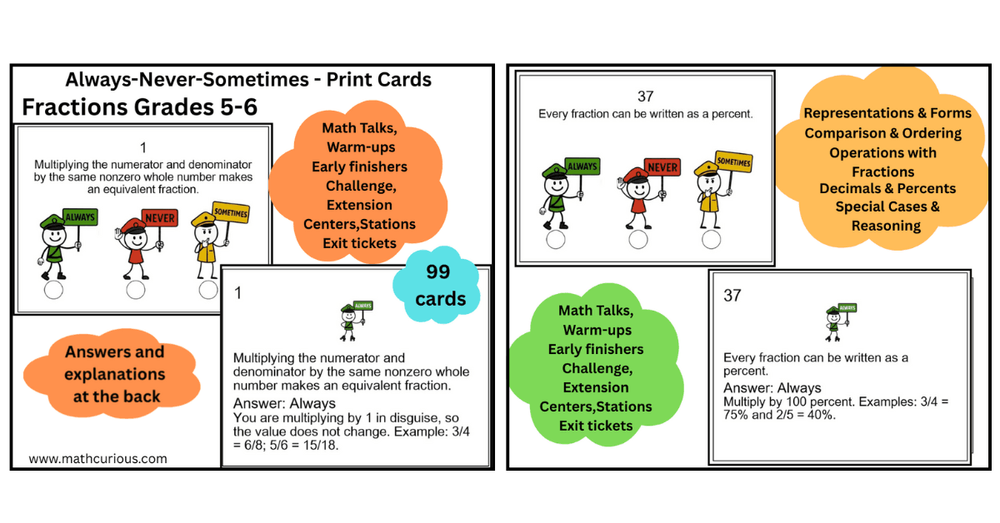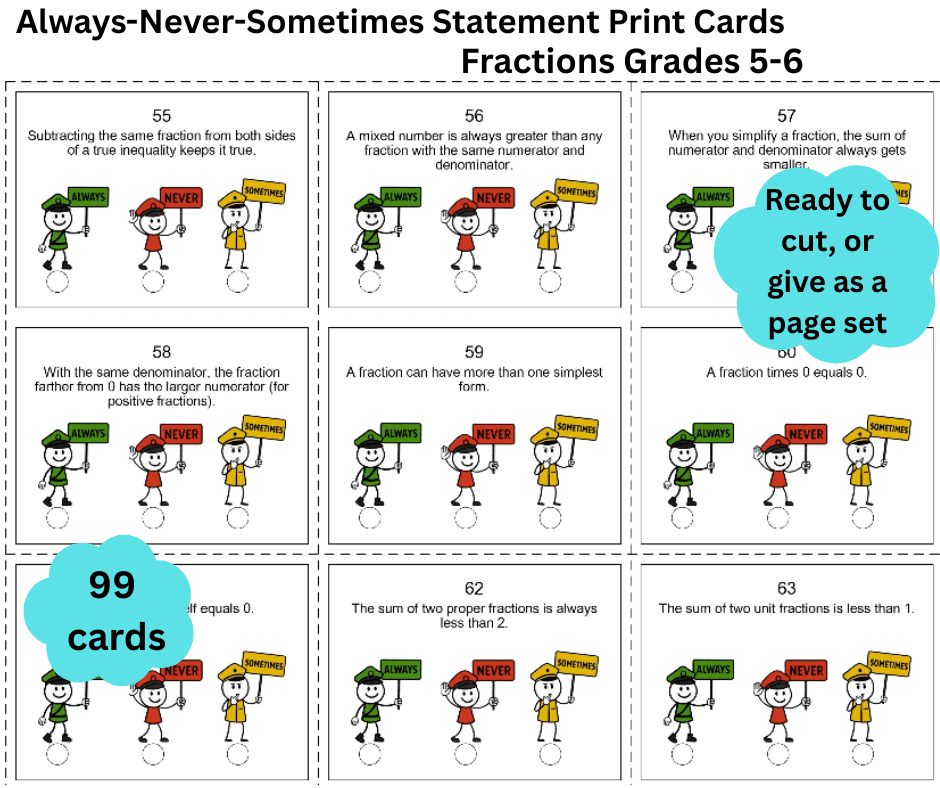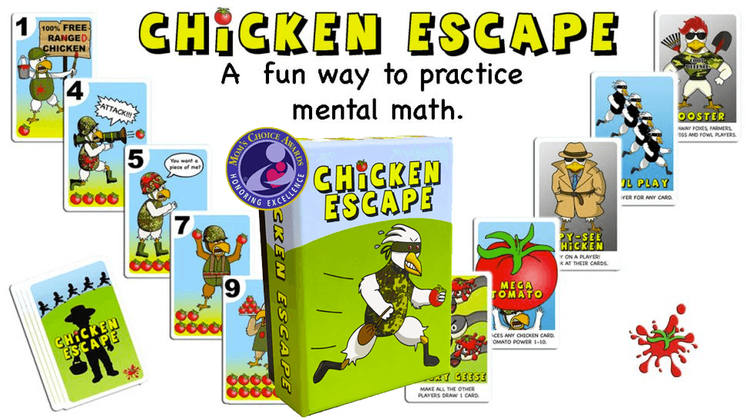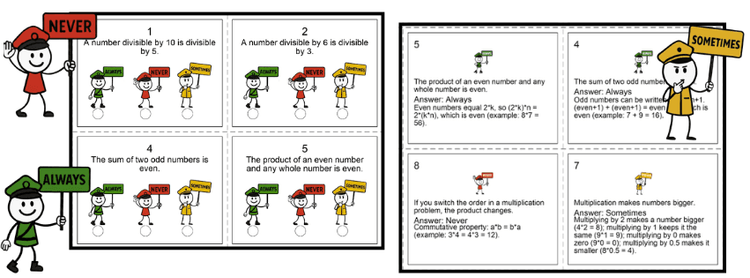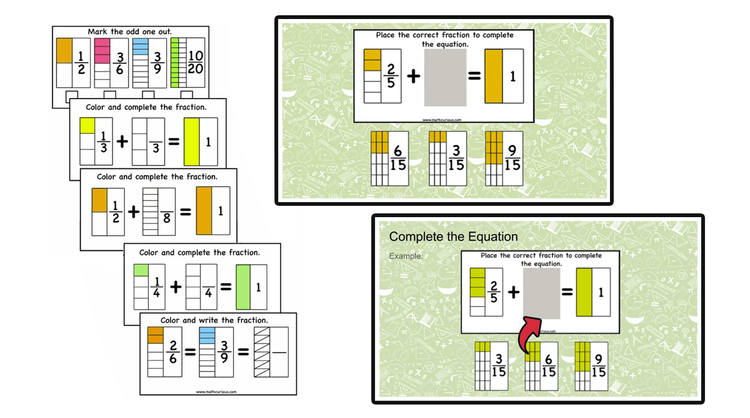Spark Deeper Thinking with “Always, Sometimes, Never” Cards - Fractions (Print & Digital)
Looking for a rich way to build fraction sense? This print + digital set uses Always / Sometimes / Never statements to get students thinking, talking, and justifying—not just computing. It’s designed for Math Talks, Warm-ups, Centers/Stations, Early Finishers, Exit Tickets, Intervention, and Enrichment with self-check options that give instant feedback.
What it is
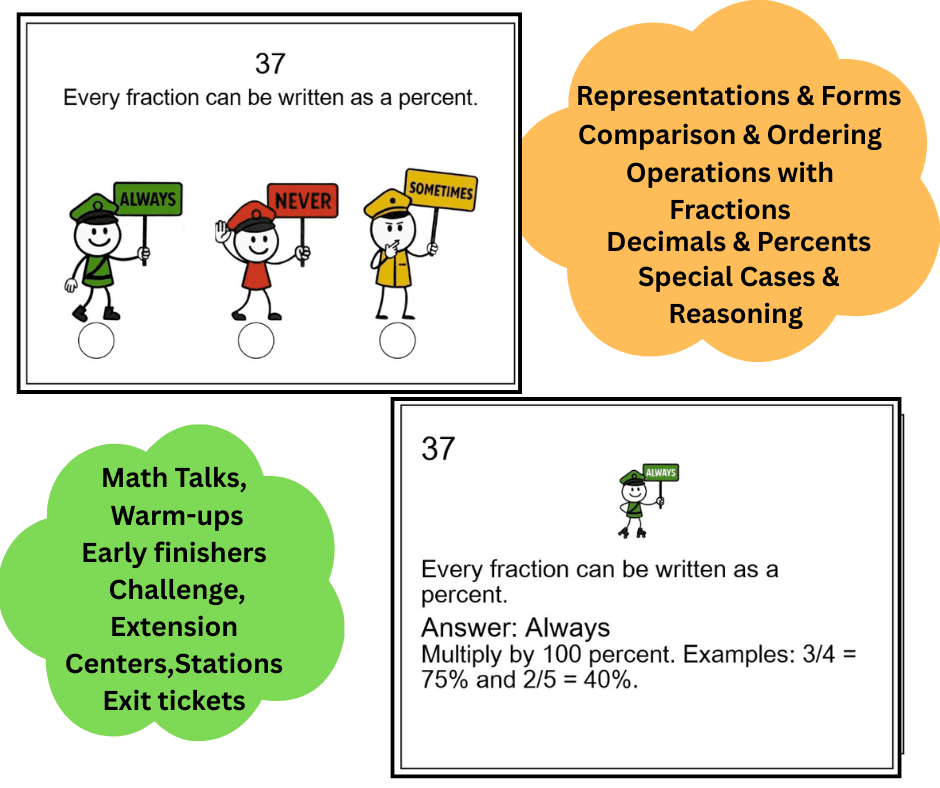
Each prompt is a short statement students judge as Always, Sometimes, or Never true—then justify. Every card includes:
A crisp statement (e.g., “A fraction with a larger denominator is smaller.”)
The correct verdict (+ a kid-friendly explanation) at the back
Self-check mode: Students select a verdict, see instant feedback, and read a clear explanation with examples/non-examples.
Why it works
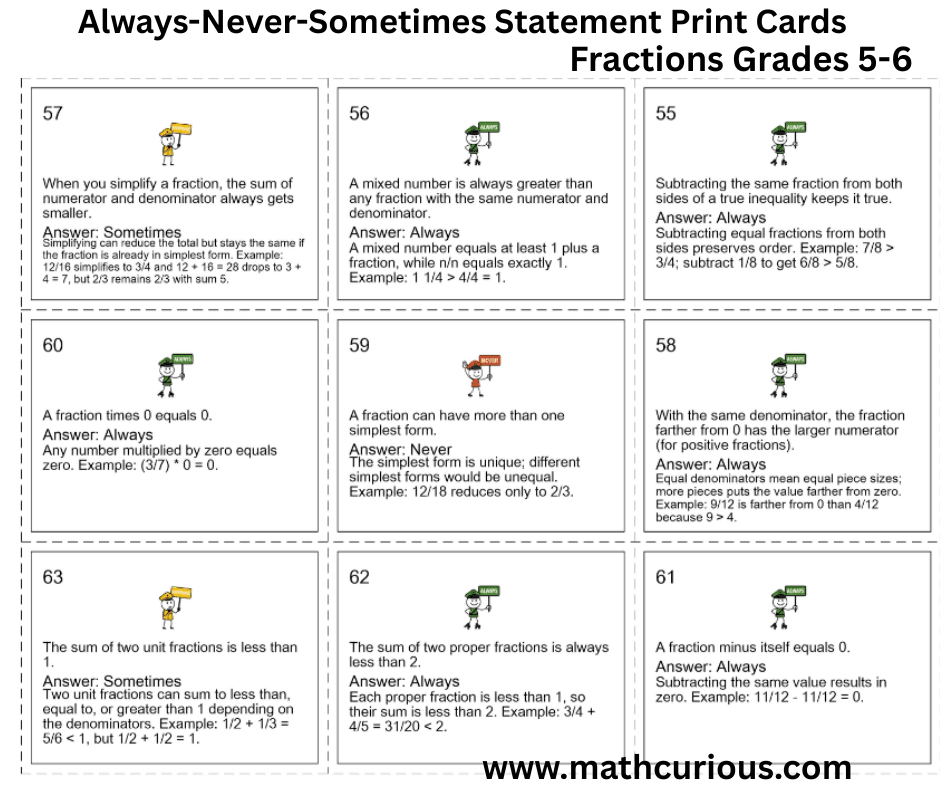
Promotes mathematical reasoning: Students must test cases, define conditions, and generalize.
Targets misconceptions: Statements are designed to surface common errors (e.g., “add the denominators,” “bigger denominator is always smaller,” “any repeating decimal equals a simple fraction”).
Builds vocabulary & precision: Kids defend claims using terms like factor, multiple, equivalent, terminating, unit rate.
Low floor, high ceiling: Everyone can try specific examples; advanced students construct proofs or counterexamples.
Instant feedback keeps practice focused and independent.
Perfect for Many Moments
Math Talks (5–10 min):
Project a card, give think time, then run a quick discussion: “What’s one example that supports your claim? What would change the verdict?”
Tip: Use turn-and-talk + sentence stems: “I think it’s sometimes because… For example…”
Warm-ups:
One card a day builds a culture of reasoning and primes the day’s content (e.g., fraction comparison before adding unlike denominators).
Early Finishers:
Students grab a card or open the digital deck, record a verdict + justification, then check and refine.
Challenge/Extension:
Ask students to find boundary cases (e.g., when a statement flips from true to false) or write a new card with answer + explanation.
Centers/Stations:
Mix concepts at a station. Students sort cards into A/S/N, then reveal answers and revise their sort.
Exit Tickets:
End class with one card. Collect verdicts + written examples; in digital, export or review logs.
What’s Inside (Examples by Strand)
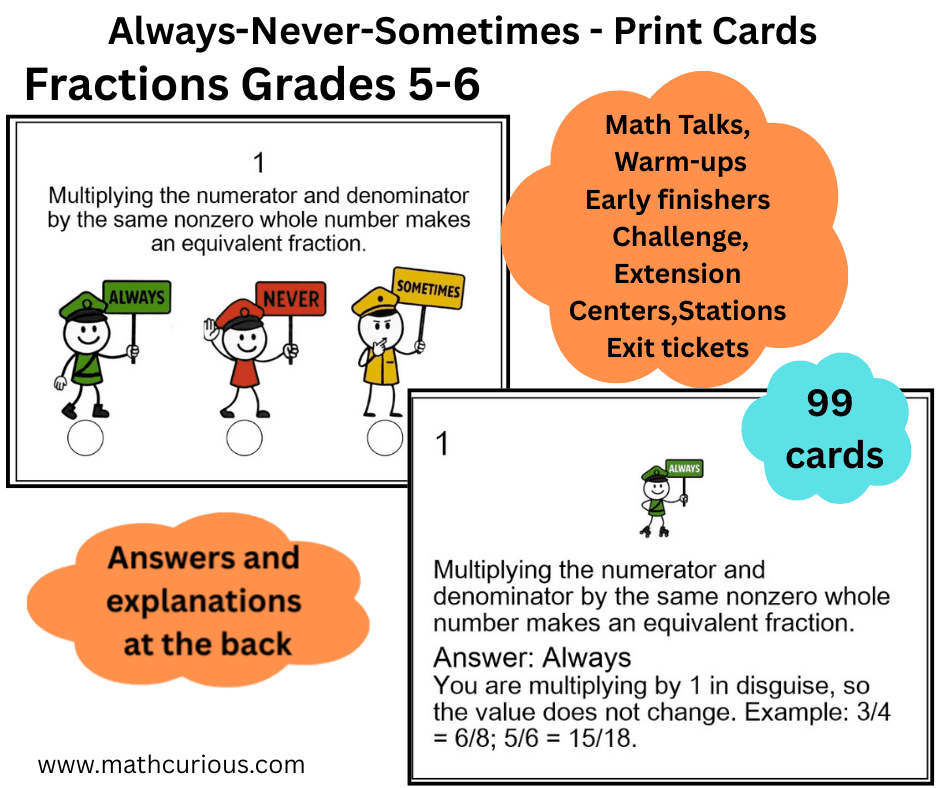
Print & Digital—How to Use
Print cards: Cut, ring-bind by topic, and store in “grab & go” bins.
Digital self-check: Assign in your LMS or share the link. Students choose a verdict, see instant feedback, and read an explanation with examples/counterexamples. Great for independent stations and homework.
Differentiation Tips
Provide hint cards (keywords: factor/multiple, LCD, reciprocal, rate).
Offer visuals (number lines, bar models) for conceptual access.
Push depth with “When is it true? When is it false?” and “Find the smallest counterexample.”
Invite students to create their own A/S/N cards, including the correct verdict and two examples + one counterexample.
Quick Routine You Can Try Tomorrow
Display one card.
Think time (30–60 s) → quiet thumbs for A/S/N.
Turn-and-talk with sentence stems.
Whole-class share: collect one supporting example and one counterexample.
Reveal verdict + explanation (print back or digital).
Reflect: “What changed your mind?” “How would you tweak the statement to make it ‘Always’ or ‘Never’?”
